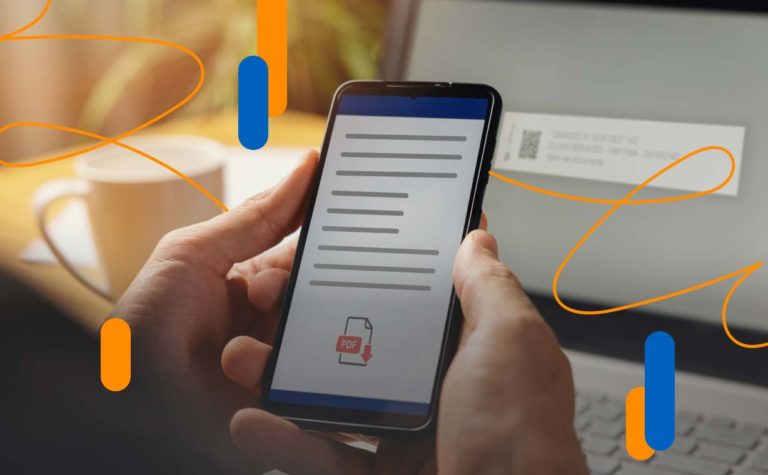In recent years, there has been an unprecedented rise in digital crime. Financial scams, identity theft and fraud associated with the manipulation of stolen sensitive information have become one of the main risks. In fact, according to the Association of Certified Fraud Examiners (ACFE), fraud attempts have grown by more than 65% worldwide in the last year, with the financial sector and fintech being the most exposed.
As a result, both businesses and citizens face a major challenge: protecting information and ensuring that every document transaction is authentic, complete and verifiable. To achieve this, it is essential to understand the main threats they face, as well as what preventive measures they can take to maintain trust in digital environments.
Digital fraud: from isolated crime to a global business
How many calls, emails or text messages have you received in the last year with suspicious links, designed to be clicked on to redirect you to a fraudulent page or steal sensitive information? Probably more than you can remember. And this is not an isolated case: In recent years, attempts at financial fraud and cyberattacks have grown worldwide, with the development of carefully studied strategies designed to make it increasingly difficult to distinguish between what is real and what is not. For example, despite its usefulness in everyday life, artificial intelligence is emerging as the new star method, especially through deepfake videos.
If we look at specific figures, reports on this subject reinforce this assertion. According to the Fraud Intelligence Report 2025, produced by Facephi, cybercrime is expected to cost £10.5 billion annually by 2025. We are no longer talking about sporadic cases that affect people in our circle; we are talking about digital fraud becoming a new industry: “Fraud as a Service” (FaaS) and “Crime as a Service” (CaaS) are here to stay.
Types of common financial scams
Thus, there has been a worldwide surge in cyberattacks and scam attempts. And these are not limited to a single method: they rely on multiple strategies to get inside and compromise the security of users and financial institutions. Among the most frequent are:
Identity theft with certificates
The goal of any cybercriminal attempting to defraud another person financially is to steal digital credentials in order to carry out financial theft. They can achieve this in different ways, one of which is identity theft using certificates or private keys. Once they have obtained these, they can validate or sign documents on behalf of another person, which directly compromises the legal integrity of the transactions.
Identity theft
This is one of the most common tactics used to deceive people. Cybercriminals send messages via email, SMS or even phone calls, posing as banks or other recognised entities to obtain personal information and sensitive data, such as passwords or financial details.
Falsified or altered documents
According to Durán&Durán Abogados, document falsification is ‘a crime that consists of altering, fabricating or manipulating documents in order to pass them off as authentic or fraudulently modify their content’. Within this type of scam, there are different methods that cybercriminals can use:
- Falsification of contracts
- Falsification of public deeds
- Falsification of invoices and commercial documents
- Falsification of cheques and means of payment
- Use of false documentation to obtain credit and financing
In many cases, the aforementioned false documents are often very well crafted. However, it is advisable to pay special attention as they may contain certain warning signs, such as:
- Inconsistencies in the documentation
- Requirement for advance payments
- Lack of traceability or verification of the information provided
How to avoid financial scams?
However, experts point out that it is not a question of taking action once the crime has taken place and we have become victims. On the contrary, the most correct and optimal way to protect ourselves against financial scams is to be cautious and take preventive measures to avoid these incidents.
To do this, it is essential to use analysis tools and digital identity tools, such as:
- Private key. Keeping private keys under exclusive custody is essential to ensure that only the owner can sign or validate digital documents.
- Digital certificate. When carrying out any type of transaction that requires digital identification, it is essential that the digital certificate we use has been issued by an authorised certification authority, such as the FNMT in Spain or Viafirma in Colombia for digital certificates for legal entities. This is the only way to guarantee the legal validity of transactions, making identity theft more difficult.
- Verification of authenticity. Of course, we cannot accept or process any document that has been signed electronically, regardless of its type, that comes into our possession. We must first verify the origin of the document, its validity, and its time stamp to avoid possible negative consequences.
- Traceability. With this procedure, financial institutions can detect and prevent fraudulent activities. By tracking each transaction, financial institutions can identify suspicious movements and investigate them further. Let us use the following example to illustrate: imagine that one of your customers repeatedly makes a large transaction that does not match their usual transaction history. Clearly, this could be a warning sign of fraudulent activity, and protective measures could be taken.
Securing your financial transactions is possible with Viafirma
A preventive approach by users and institutions is essential to stay ahead of potential risks and financial fraud. However, this would be impossible (or very complicated) without technological tools that guarantee the traceability and authenticity of each transaction. In this regard, Viafirma’s digital solutions offer an additional layer of security that allows organisations to operate in the digital environment with full guarantees.
With advanced digital signatures, each document signed with Viafirma generates verifiable electronic evidence (time stamps and complete traceability) that makes any attempt at manipulation or impersonation difficult. Our digital solutions are also legally backed and comply with national and international regulations. In this way, we position ourselves as strategic allies to shield operations, strengthen digital trust and protect users, customers and businesses. Contact us and start strengthening your organisation’s security today.




